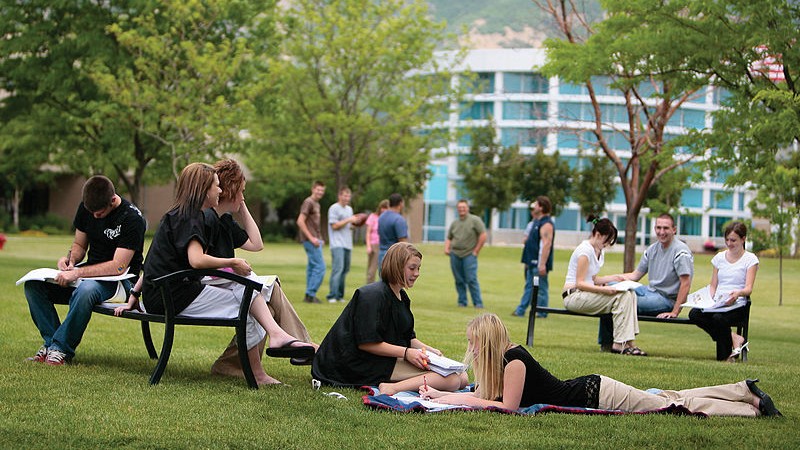Students Prefer Colleges With High Price Amenities, Despite Demands To Lower Costs
Lavish college amenities such as lazy rivers and rock climbing walls are driving tuition up, but college students prefer these offerings.

University tuition is increasing. Student loan interest rates are climbing. Inflation is up, the value of the dollar is down, and gas prices are higher than they’ve ever been. Young adults just learning to budget and make adult goals have been complaining about the price of college for years, but despite this, many still prefer to attend a campus that includes extraneous expenses for unnecessary college amenities like climbing walls, omelet bars, and even water parks.
Anyone who understands economics and financing can explain how high-cost college amenities drive the price of tuition up, especially in times of financial crisis. While families struggle to make ends meet, many are questioning these lavish expenses — especially as politicians work to cancel student debt and push the burden of young adult expenses off onto taxpayers who did not sign up for these unnecessary costs. Meanwhile, students are not learning their lesson.
The higher education consulting & research firm, Art & Science Group conducted a survey this spring regarding college amenities. As Generation Z is burdened with $1.75 trillion in school loan debt, nearly half of students planning to attend a 4-year university admitted to preferring schools with more recreational services (that cost more), than those which merely work to teach students on campus. While many support the desire to attend a university with good food, taxpayers are not interested in funding schools that look more like a theme park than a school.
In 2017 The University of Florida proposed a $30 million plan to install a lazy river and update other recreational activities. This was later reduced to a $1 million budget using private donations, but many were outraged. Individuals who donate to colleges are often looking to help students who are financially struggling to receive grants and increase graduation rates. College amenities like this are not just known in Florida. Campus water parks are so popular that there is even a list of the best ones. The University of Colorado, The University of Alabama, and universities across the nation are being ranked for their water slides and lazy rivers.
In addition, climbing walls have also gained popularity on American campuses. Instead of meeting physical education needs with simple gyms and encouraging jogging, dance classes, or biking, modern universities have installed faux rock climbing walls. From Dartmouth to Stanford, the University of Arkansas and Penn State, numerous schools have funded these college amenities which drive up the cost of student living.
As students complain about the high price of earning a degree, following the money isn’t difficult. Tuition costs have increased due to the many extravagant luxuries that students have sought out. When working to budget during economic uncertainty, many parents will agree that there is no time or money for college amenities like water parks and climbing walls. Exercise is important but can be done without paying any additional fees.

If students wish to be taken seriously in their crusade for “free college” (which is taxpayer funded), they need to accept the fact that schools cannot continue to pay for the upkeep and maintenance on these high price college amenities. Regardless of what young adults want, the majority of taxpayers need to know that education funds are working to enlighten students rather than pay for parties. Until these unnecessary costs are removed the fight over the price of tuition and who pays it will continue.



